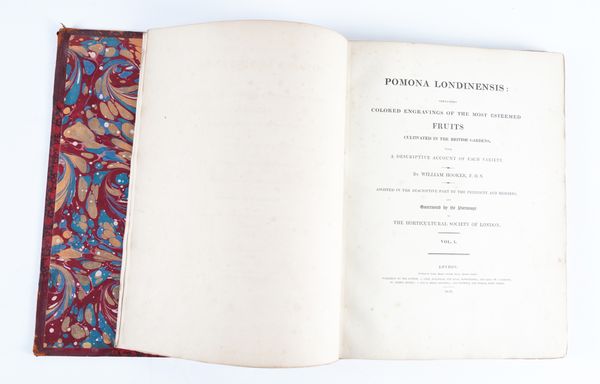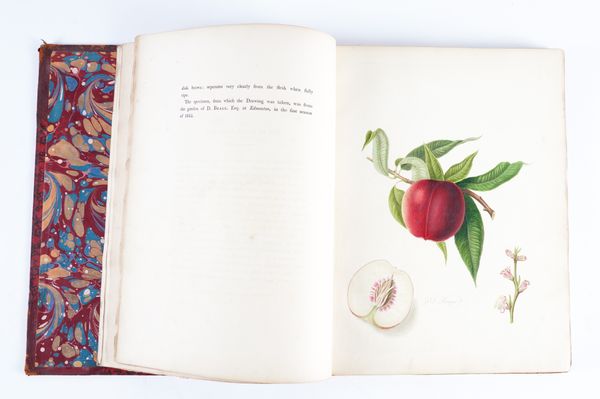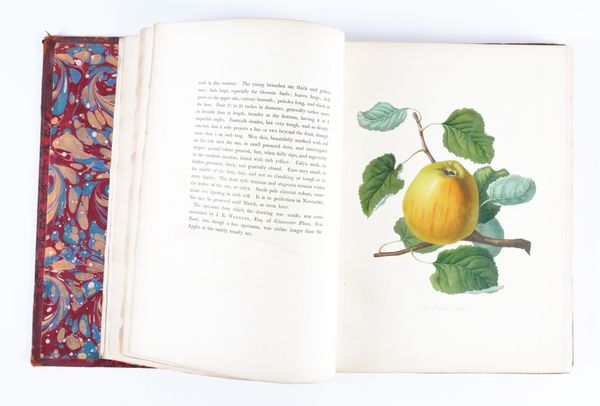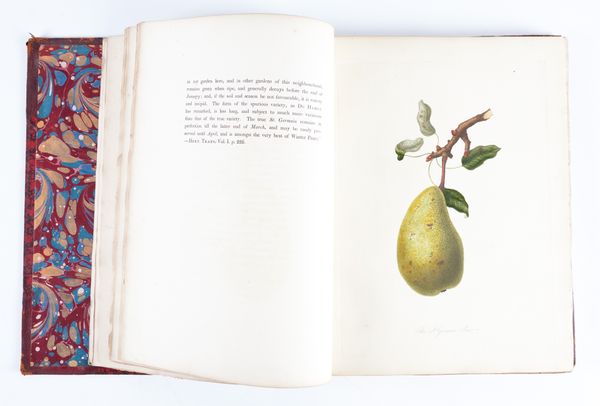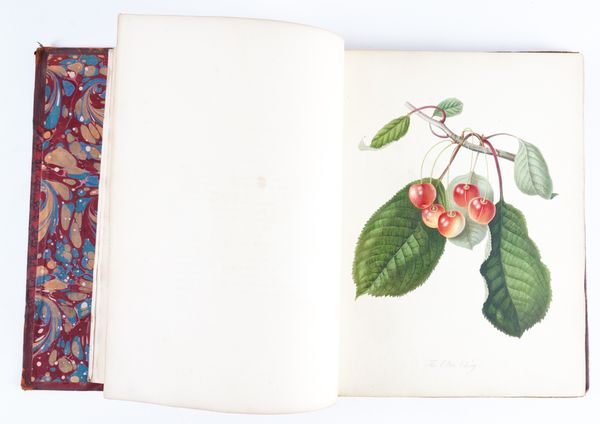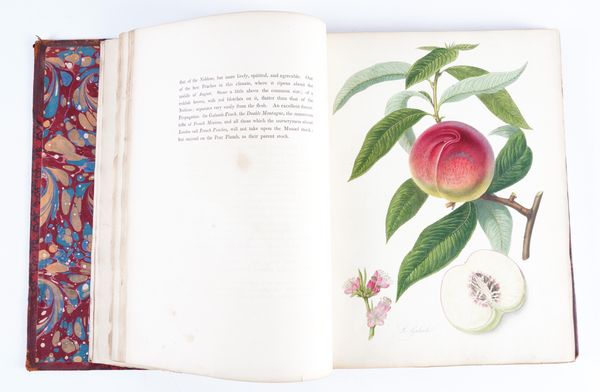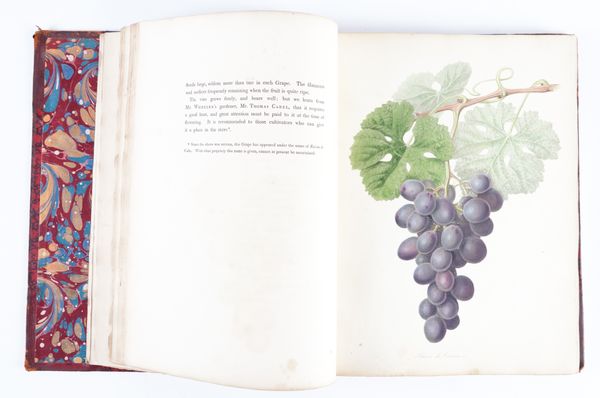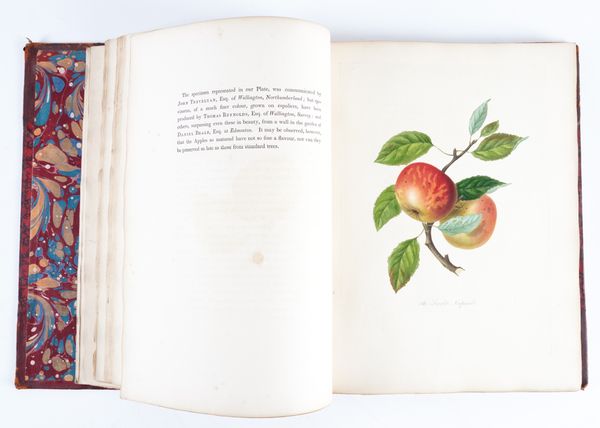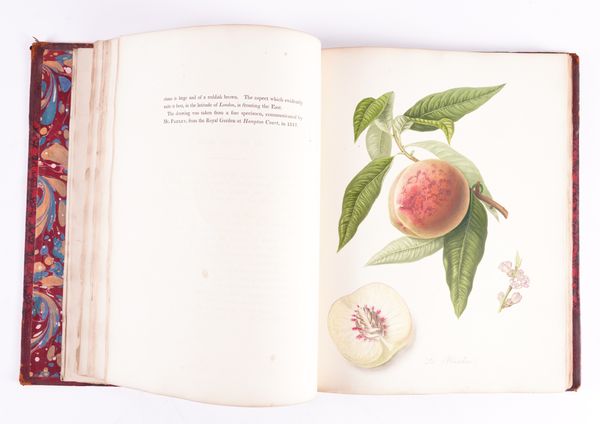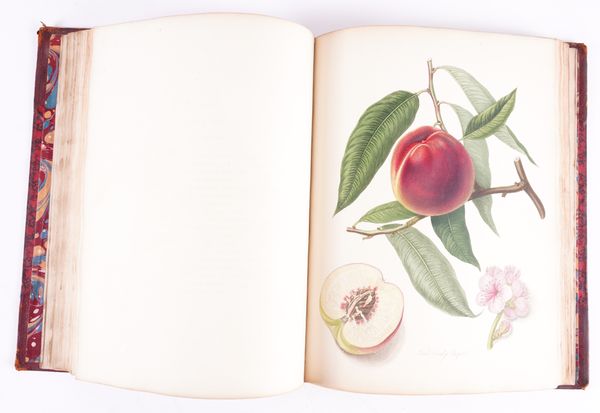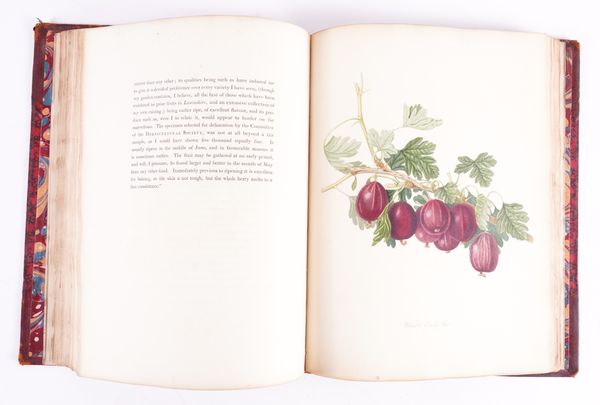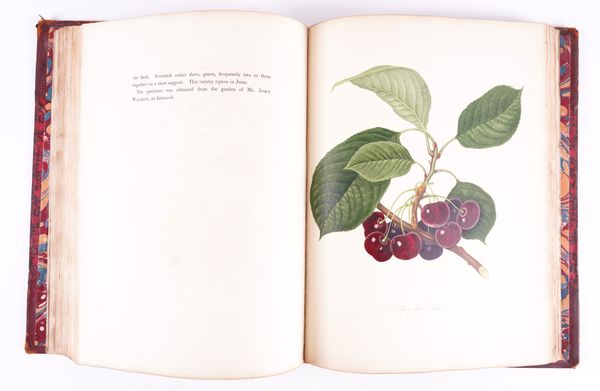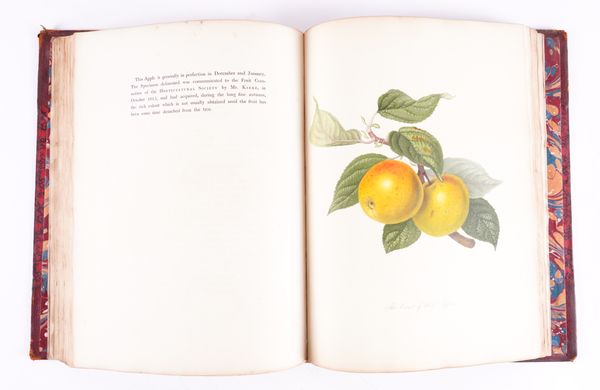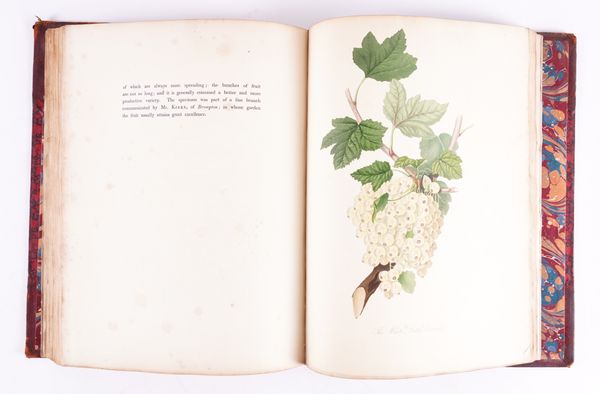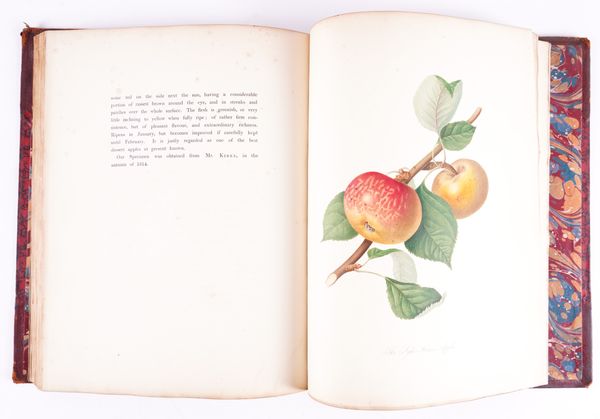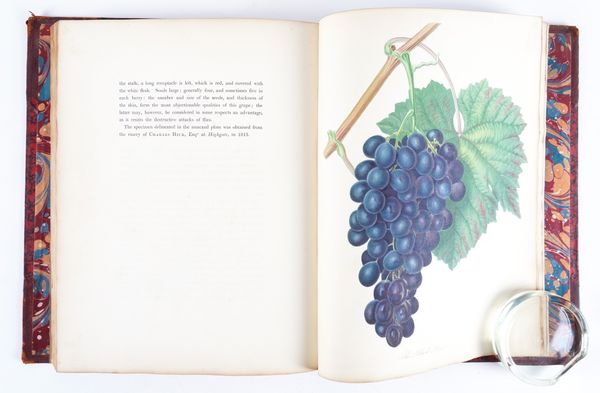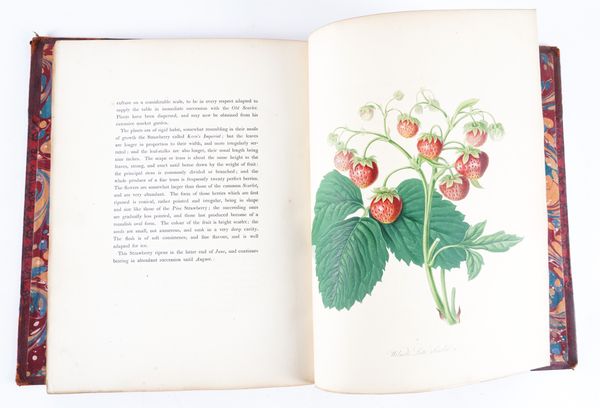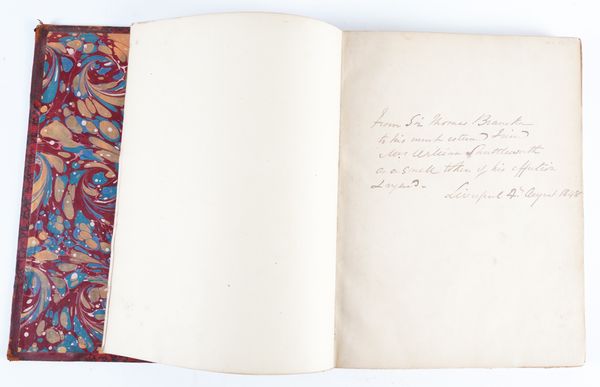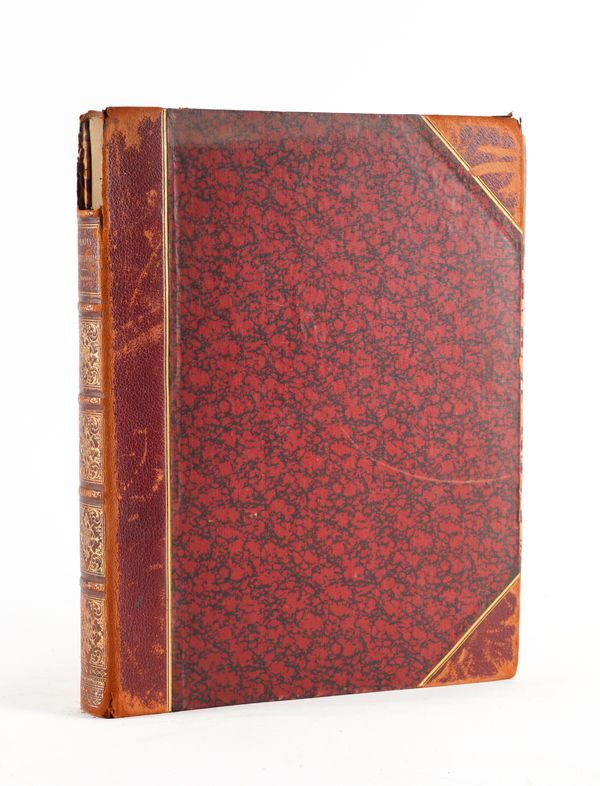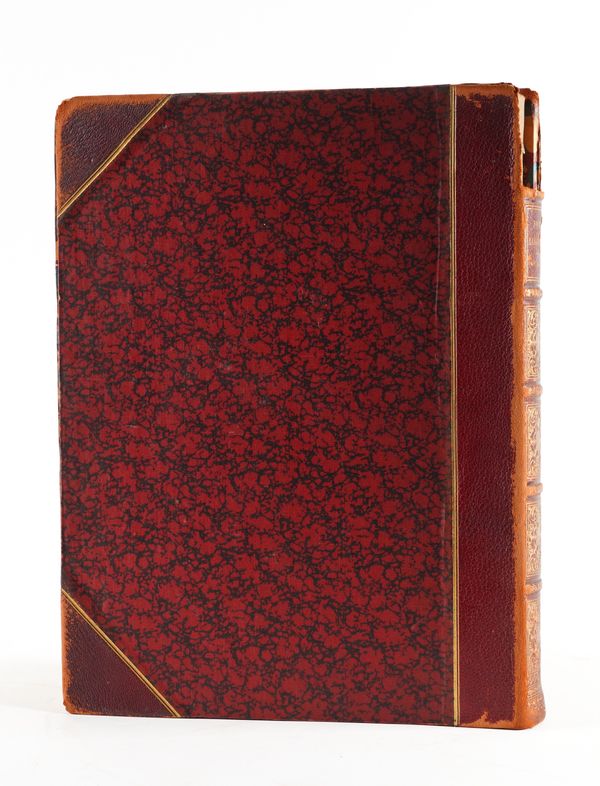HOOKER, William Jackson (1785-1865). Pomona Londinensis, London, [1813]-18. Volume one only [all published], 4to, 49 exceptionally fine hand-coloured aquatint plates of fruit, contemporary half morocco (rubbed). FIRST EDITION.
| Estimate: | £3,000 - £5,000 |
| Hammer price: | £2,800 |
HOOKER, William Jackson (1785-1865). Pomona Londinensis: Containing Colored [sic] Engravings of the Most Esteemed Fruits in the British Gardens with a Description of Each Variety. By William Hooker, F. H. S. Assisted in the Descriptive Part by the President and Members and Sanctioned by the Patronage of the Horticultural Society of London. London: "Published by the Author ... And sold by J. Harding ... J. and A. Arch ... and Rodwell and Martin," [1813-]18. Volume One only [all published], 4to (332 x 250mm). 49 exceptionally fine hand-coloured aquatint plates of fruit by William Jackson Hooker (some light spotting and staining to the text, some mainly marginal very light spotting and staining to the plates). Contemporary half morocco, top edges gilt, others uncut (lacking the top compartment of the spine, heavily rubbed and scuffed, inner hinges broken). Provenance: "From Sir Thomas Branston to his much esteemed friend Mrs William Shuttleworth as a small token of his affection & regard, Liverpool, 4th August 1848" (inscription on front free endpaper). FIRST EDITION of this work of which only the first seven parts were published between 1813 and 1818. "In 1827 Hooker became editor of Curtis's Botanical Magazine, where several of his illustrations appeared, and in 1841 he became the first director of the Royal Botanic Gardens at Kew. As director of Kew Gardens, Hooker's first moves were to open the gardens to the public and to establish an arboretum, museum and library. More greenhouses were added and the magnificent Palm House was completed [under his direction] in 1848" (Jack Kramer, The Art of Flowers, New York, 2002, p.154). It is not known why the present work was abandoned, and, despite the ravishing beauty of its plates, it is not listed among his works in DNB. Brunet II, 626; Dunthorne 139: "... among the best of all fruit prints"; Nissen BBI 913; Raphael An Oak Spring Pomona 42: "... no more parts were published after the end of Volume I, which described thirteen apples, eight pears, seven plums, five peaches, four nectarines, four cherries, and one or two examples of several other fruits"; Sitwell Great Flower Books 1700-1900 p.60.
